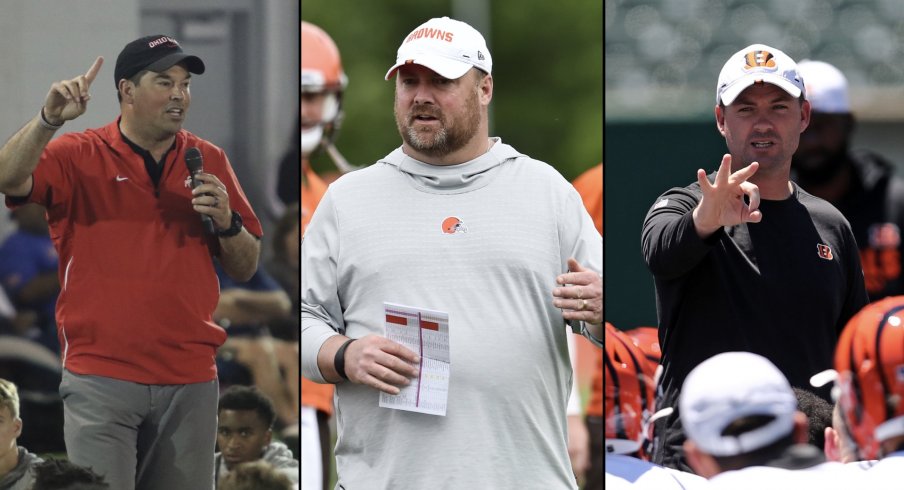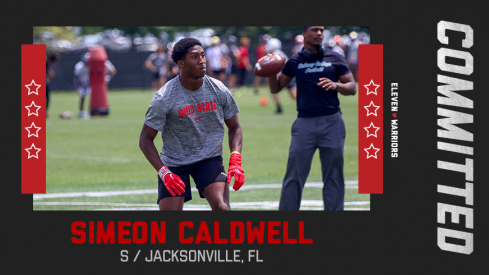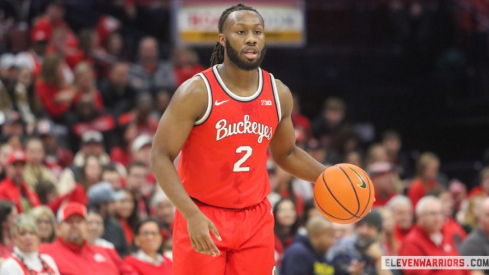Ohio State adds another top-100 safety as Simeon Caldwell commits to the Buckeyes.
In the fall of 1941, a 33-year-old former college quarterback took his first high-profile coaching job, poised to lead the most popular team in Ohio.
After losing just one game that first season, Paul Brown would follow it up by leading the Ohio State Buckeyes to the first national championship in school history just one year later. Four years later and following a stint in the Navy, Brown elected to give pro football a try, building a team from the ground up in Cleveland.
Despite leading the team bearing his own name to seven league championships, Brown was famously dismissed by Art Modell in 1962. Six years later, he'd head south to Cincinnati to found an expansion AFL franchise in which he had full control.
Brown remains one of the most respected and deified figures in football history, but nowhere is his presence felt more than in his home state. High school state championship games continued to be played in the Massilon stadium bearing his name, while three-and-a-half hours southwest down I-71, his son Mike remains firmly in control of the Bengals.
While both the Bengals and Browns have had periods of success since he stopped coaching in 1975, neither team has remained as competitive as the Buckeyes, who have won seven national and 31 conference titles since Brown left Columbus. As Ryan Day enters his first season in charge of the program, he becomes just the eighth man to fill the role since Brown departed 76 years ago.
"Every coach who ever put a whistle around their neck strives to be the head coach at The Ohio State University," Day said at the press conference announcing his ascension from offensive coordinator last December. "I fully understand the challenges that await for me. And being on the same list as Paul Brown, Woody Hayes, Earle Bruce, John Cooper, Jim Tressel and Urban Meyer, it's extremely humbling, but I'm prepared and ready for the task."
The Bengals have also seen eight men try to fill Brown's shoes on a permanent basis, while that number is double in Cleveland. Yet 2019 marks the first time all three teams break in a new head coach at the same time, with Zac Taylor taking over on the banks of the Ohio River while Freddie Kitchens does the same on the shores of Lake Erie.
Like Brown, all three were college quarterbacks: Day at New Hampshire, Kitchens at Alabama, and Taylor at Nebraska. Similarly, each is taking on their first head coaching job at either the college or pro level. From a pedigree standpoint, however, the similarities end there.
Kitchens, 44, worked his way up from the college ranks and spent a decade with the Arizona Cardinals, tutoring tight ends, quarterbacks, and running backs as a position coach while working for Ken Whisenhunt and later Bruce Arians. Arians would have the greatest impact on his coaching philosophy, embodied by his trademark catchphrase, "No risk it no biscuit, You can’t live scared” and a propensity to take shots downfield in the passing game.
Once Kitchens took over the underperforming Browns offense last fall in his first stint as a play-caller, the results were staggering, as the unit averaged 6.86 yards per play from weeks 9-17. For reference, only the 2000 Rams (6.98 ypp) have averaged more across a full season since the 1970 NFL-AFL merger.
With Baker Mayfield slinging it, the Browns looked like an Arians offense, utilizing a slew of vertical concepts that went after any perceived weakness in the secondary.
Taylor, meanwhile, comes from a pure West Coast offensive background. Though he coached quarterbacks under wunderkind Sean McVay last year with the L.A. Rams (who himself came of age under the tutelage of Mike Shanahan and both Jon and Jay Gruden), Taylor was mentored by Bill Callahan while at Nebraska and hired his son, Brian, to be the Bengals' offensive coordinator.
Before coaching Taylor, Callahan worked under the elder Gruden in Oakland, along with Andy Reid in Philadelphia, both of whom apprenticed Mike Holmgren in Green Bay, who worked closely with the man credited with inventing the West Coast system, Mr. Bill Walsh. While Walsh made the system famous with the San Francisco 49ers in the 1980s, it was the time he spent as a coordinator beforehand in which he developed a system which would modernize the game in countless ways.
As Walsh wrote in his magnum opus, Finding the Winning Edge:
It was the time I spent with the Cincinnati Bengals, however, that gave me a chance to fully develop my own coaching philosophies and to put them to practical application. Working for Paul Brown, the renowned coach from Ohio State and later the Cleveland Browns, and the founder of the Cincinnati Bengals, was a tremendous professional opportunity for me. To Paul's credit, he gave his coaches total autonomy. As a result, we were able to develop our own philosophies and systems.
...
Because the Bengals weren't strong enough on the offensive line to be able to run the ball consistently, we decided that our best chance to win football games was to somehow control the ball. As a result, we devised a ball-control passing game in the hope that if we could make 25 first downs in a given game and if we also had good special teams play, we would have a reasonable chance to stay competitive in the ball game. In the process, hopefully something good would happen.
Over the eight-year period that I spent on the Bengals' staff, we were able to develop a system that is now known as the "West Coast Offense"—a term which I imagine sounds much more glamorous than the "MidWest Offense." Ideally, I would like to say that what we developed and began in Cincinnati was done with a conscious eye to the future and the affirmation that we would be able to extend this system to historic levels of offensive production for years to come.
In Walsh's system, short passes which stretched the defense horizontally would replace many run plays, using the running backs in the passing game and sending receivers on shallow crossing patterns that created quick and easy reads for the QB. That philosophy essentially became the foundation for many modern spread tactics, such as wide receiver screens and run/pass options.
With Taylor at his side, McVay turned the Rams into one of the NFL's most feared offenses by meshing Walsh's philosophies with modern tactics, deploying 11 personnel (1 tight end, 1 running back) almost exclusively, while sending players in motion more than anyone else in the league.
Today, motions and shifts have become an even larger part of the game, increasing by at least 4% in each of the past five NFL seasons. But it was Walsh who first made regular use of it as a weapon to keep defenses on their heels.
As Walsh explained in a second book, Building A Champion:
In the third quarter [against the Raiders], Bob Trumpy lined up on the wrong side by mistake. He had to shift over quickly to the other side, and all hell broke loose. At that time, the Raiders had very specialized people. They had a weak-side linebacker, they had a strong-side linebacker, they had a defense end who only played on the tight-end side, and they would shift their two inside linebackers. So, when Bob shifted, they all ran into each other in the middle of the field, trying to adjust."
Unlike Kitchens or Day, who have already had the chance to show what their systems will look line, Taylor will lean on his time with the Rams to define his.
“It will be the Cincinnati Bengals’ playbook. There’s no doubt about it," Taylor told PFT Live back in February. "The starting point will be what we did in L.A. We had a lot of success there. I believed in what we did. But I think it was also important to hire people with outside experiences.”
Like the other two, Day was also shaped by a famous mentor – his former college coordinator and eventual boss in the NFL, Chip Kelly.
"He's shaped it as much as – he and Urban are probably the two biggest influences, and Steve Addazio would be the third in what they've done for me in my career," Day said of Kelly this month at Big Ten media days. "He's always thought outside the box. He's been an innovator in the game, and so much of what we do is very much in line with his philosophies and some of the concepts that he built because what he did was he combined the spread run game with the pro passing game when he went to the NFL, and that's kind of our philosophy."
Even though Day (by way of Kelly) operates out of the shotgun far more often than Kitchens or Taylor, the trio all employ base, zone run schemes with gap schemes such as Power and Counter used as change-ups. Day's passing game, however, isn't afraid to take the best of what both Kitchens' and Taylor's teams do best.
The Buckeyes' use of compressed and bunch formations has been well-documented in this space, but as he showed last fall, Day is happy to mimic the Rams in more ways than one. With Dwayne Haskins at the helm, Day called traditional West Coast concepts, such as Drive...
...but was still more than happy to take the top off with deep shots that would make Arians and Kitchens proud.
Yet while Day may be happy to admit that he and his mentor are happy to incorporate the best ideas they see on Sundays, the reality is NFL coaches do the same on Saturdays, and Kitchens and Taylor appear to be no different. With the exception of true option runs which make the quarterback a runner, the line between so-called "college" and "pro-style" offenses has blurred.
When Day first arrived as the OSU co-coordinator in 2017, he quickly implemented two core passing plays for which Kelly had been known: Mesh and Saints (which is now called Spread in the OSU playbook). The result was a reinvigorated passing game that saw J.T. Barrett throw for 3,053 yards and 35 touchdowns on his way to earning Big Ten Quarterback of the Year honors.
Despite seemingly disparate philosophies, both Kitchens and Taylor weren't afraid to incorporate what worked for Day and the Buckeyes. Kitchens incorporated the signature Mesh concept with great success, getting shifty running back Duke Johnson open on the same wheel route that J.K. Dobbins, Mike Weber, and Demario McCall have run with great success over the past two seasons.
Meanwhile, Taylor, McVay and the Rams weren't afraid to attack downfield with the same, three-deep vertical read as Saints/Spread, beginning with the route closest to the bench off play-action and working back across the field.
Thanks to the success of coaches like McVay and Oklahoma's Lincoln Riley, teams with vacancies across both the pro and collegiate levels sprinted to hire the next young, offensive mind available, undoubtedly impacting the decisions to offer the jobs to Day, Kitchens, and Taylor. And while their own hires on the defensive side of the ball might ultimately be the most important calls each of them makes this year, it's clear that the once conservative tradition of offense in the Buckeye state is as outdated as Paul Brown's sideline fedora.
From Woody Hayes' 'three yards and a cloud of dust' offense to Jim Tressel's infatuation with the punt, outsiders have long found offense in the Buckeye state to be, well, you get the joke. From personal quarterback coaches in California to year-round 7-on-7 competitions in Texas, Ohio has often seemed behind the times. But today, with three relatively young, inspired former signal-callers holding the same jobs Brown once held, Ohio's three principal teams seem poised to change that perception.



